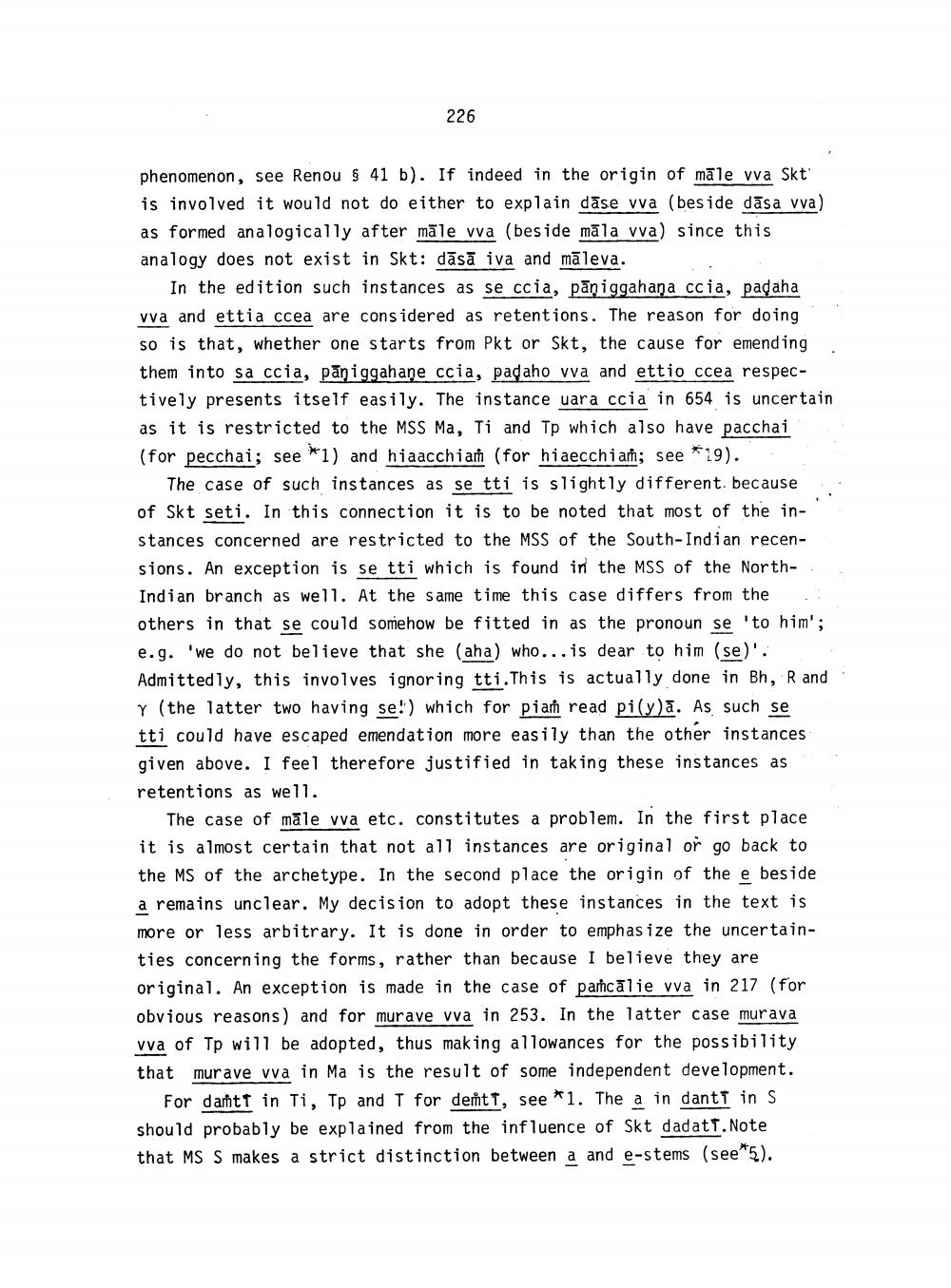________________
226
phenomenon, see Renou $ 41 b). If indeed in the origin of male wa Skt is involved it would not do either to explain dāse va (beside dāsa vya) as formed analogically after māle vva (beside māla vva) since this analogy does not exist in Skt: dāsā iva and māleva.
In the edition such instances as se ccia, pāņiggahaņa ccia, padaha vva and ettia ccea are considered as retentions. The reason for doing so is that, whether one starts from Pkt or Skt, the cause for emending them into sa ccia, pāniggahane ccia, padaho va and ettio ccea respectively presents itself easily. The instance uara ccia in 654 is uncertain as it is restricted to the MSS Ma, Ti and Tp which also have pacchai (for pecchai; see *1) and hiaacchian (for hiaecchian; see *19).
The case of such instances as se tti is slightly different, because of Skt seti. In this connection it is to be noted that most of the instances concerned are restricted to the MSS of the South-Indian recensions. An exception is setti which is found in the MSS of the NorthIndian branch as well. At the same time this case differs from the others in that se could somehow be fitted in as the pronoun se 'to him'; e.g. 'we do not believe that she (aha) who... is dear to him (se)'. Admittedly, this involves ignoring tti.This is actually done in Bh, R and y (the latter two having se!) which for pian read pi(y)a. As such se tti could have escaped emendation more easily than the other instances given above. I feel therefore justified in taking these instances as retentions as well.
The case of māle va etc. constitutes a problem. In the first place it is almost certain that not all instances are original or go back to the MS of the archetype. In the second place the origin of the e beside a remains unclear. My decision to adopt these instances in the text is more or less arbitrary. It is done in order to emphasize the uncertainties concerning the forms, rather than because I believe they are original. An exception is made in the case of pacālie va in 217 (for obvious reasons) and for murave vva in 253. In the latter case murava vva of Tp will be adopted, thus making allowances for the possibility that murave va in Ma is the result of some independent development.
For datt in Ti, Tp and T for dett, see *1. The a in dantt in s should probably be explained from the influence of Skt dadatt. Note that MS S makes a strict distinction between a and e-stems (see*5).




